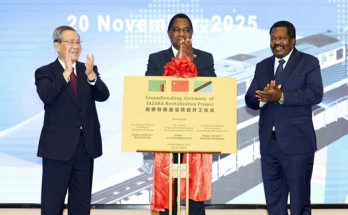 This year was supposed to be a challenging year for emerging markets (EMs). An accelerated pace of Fed tightening, protectionism, and political risks were among the prospective hurdles EMs would have to overcome.
This year was supposed to be a challenging year for emerging markets (EMs). An accelerated pace of Fed tightening, protectionism, and political risks were among the prospective hurdles EMs would have to overcome.
But as it turns out, nearly two-thirds of the way through the year, EMs have fared better than expected, QNB said in a report. A big part of that story has been China, where growth in the first half of the year averaged 6.9%, up from 6.7% last year, QNB added.
But even beyond China, EM strength has been broad-based. Brazil, Russia, Indonesia, Turkey, South Africa, and Malaysia have all posted growth in line or stronger than in 2016 thus far.
Underpinning this upturn has been a recovery in global trade, risk appetite, and commodity prices. Although some downside risks remain, QNB said it expects the growth momentum to carry through to the rest of the year.
The first and arguably most important factor supporting higher EM growth has been the recovery in global trade, QNB said. Exports represent a larger share of EM output than advanced economies, making them more reliant on trade.
World trade in goods accelerated to an average of 4.4%, in volume terms, over the first five months of the year, a pick up from 1.3% in all of 2016. Driving this change has been firming domestic conditions in Europe and the US which, in turn, boosted import demand. China has been the most noticeable beneficiary of the more robust demand.
Chinese net exports turned positive in the first half of 2017, the first time this has occurred since 2014 and their exports to the Europe and US rose by their fastest pace in two years.
QNB said the second factor is the improvement in EM risk appetite. Stronger global trade has certainly played into higher investor confidence but this trend has been primarily supported by fading protectionist fears and the US dollar weakening.
Promises of major trade barriers from the US against EMs had initially spooked investors on fears of lower future growth. However, this has failed to materialise and looks increasingly less likely. While a weaker US dollar, which has declined by 5% on a trade-weighted basis, has helped EMs overcome tighter Fed policy by reducing the value of EM liabilities denominated in USD, effectively reducing debt-servicing costs.
As a result, these developments have boosted sentiment and attracted major inflows into EMs. Portfolio inflows have reached an estimated $183bn through the first seven months of 2017 compared to just $87bn over the previous two years.
The third factor supporting growth has been the pickup in commodity prices, according to QNB. Oil and base metal prices have registered double-digit gains compared to last year on improving fundamentals (contained supply growth for oil and improving demand for metals).
This has benefited major commodity producing nations such as Russia, Brazil, and South Africa. The higher commodity export revenue has allowed for easier fiscal policy to support domestic demand. In particular, investment across these three countries has begun to register a gradual recovery after two years of decline.
Notwithstanding these factors, EMs still face some downside risks, QNB said. Central bank policy in the US and Europe could turn more hawkish in response to strong domestic conditions.
This would trigger outflows from EMs and increase external liabilities. Political risks, particularly in Brazil, South Africa, and the Korean peninsula, are elevated and could pose a drag on growth.
“China is also unlikely to continue its upward growth trend as the authorities gradually move to slow lending and curtail financial risks, generating negative spill overs to other EMs. But these risks are unlikely to have an outsized impact on growth in the remainder of 2017. Hence, we expect growth momentum to carry through for the rest of the year,” QNB said.



